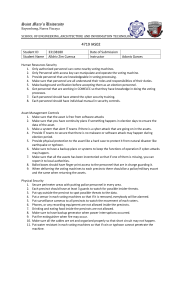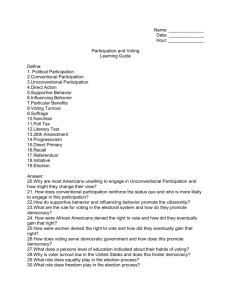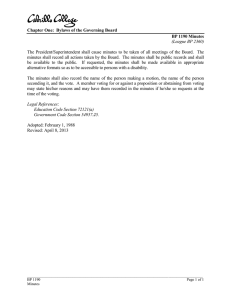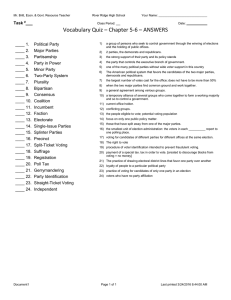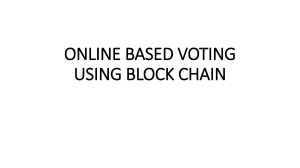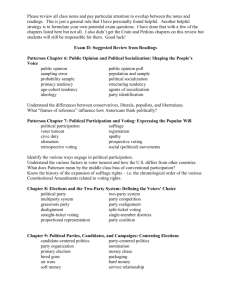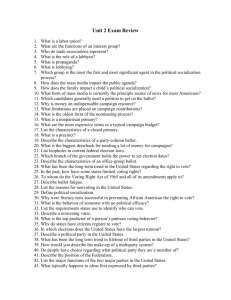Unit Two: Political Behavior- Government by the People (Chapters 5
advertisement
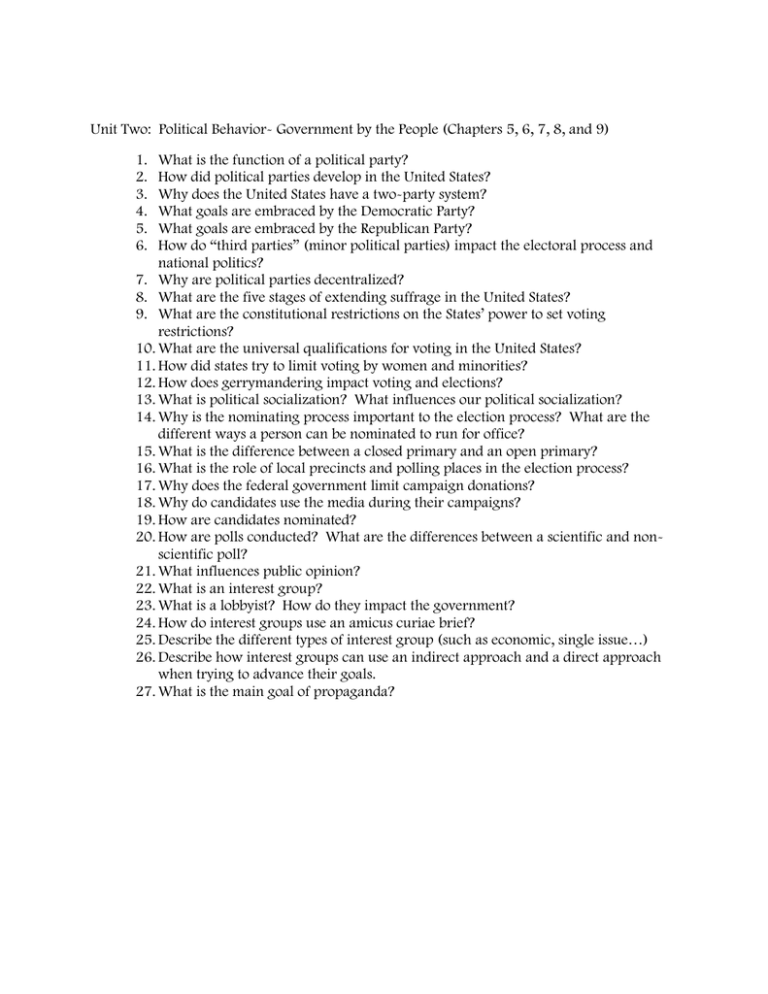
Unit Two: Political Behavior- Government by the People (Chapters 5, 6, 7, 8, and 9) 1. 2. 3. 4. 5. 6. What is the function of a political party? How did political parties develop in the United States? Why does the United States have a two-party system? What goals are embraced by the Democratic Party? What goals are embraced by the Republican Party? How do “third parties” (minor political parties) impact the electoral process and national politics? 7. Why are political parties decentralized? 8. What are the five stages of extending suffrage in the United States? 9. What are the constitutional restrictions on the States’ power to set voting restrictions? 10. What are the universal qualifications for voting in the United States? 11. How did states try to limit voting by women and minorities? 12. How does gerrymandering impact voting and elections? 13. What is political socialization? What influences our political socialization? 14. Why is the nominating process important to the election process? What are the different ways a person can be nominated to run for office? 15. What is the difference between a closed primary and an open primary? 16. What is the role of local precincts and polling places in the election process? 17. Why does the federal government limit campaign donations? 18. Why do candidates use the media during their campaigns? 19. How are candidates nominated? 20. How are polls conducted? What are the differences between a scientific and nonscientific poll? 21. What influences public opinion? 22. What is an interest group? 23. What is a lobbyist? How do they impact the government? 24. How do interest groups use an amicus curiae brief? 25. Describe the different types of interest group (such as economic, single issue…) 26. Describe how interest groups can use an indirect approach and a direct approach when trying to advance their goals. 27. What is the main goal of propaganda?

